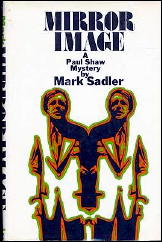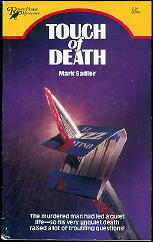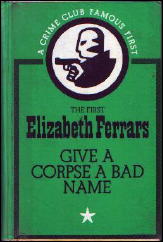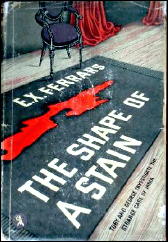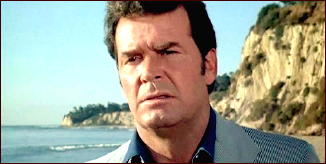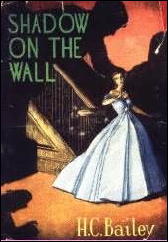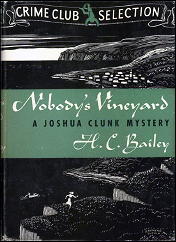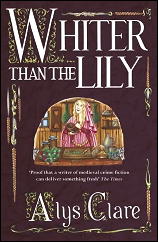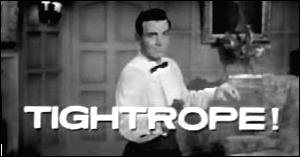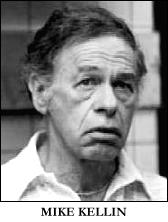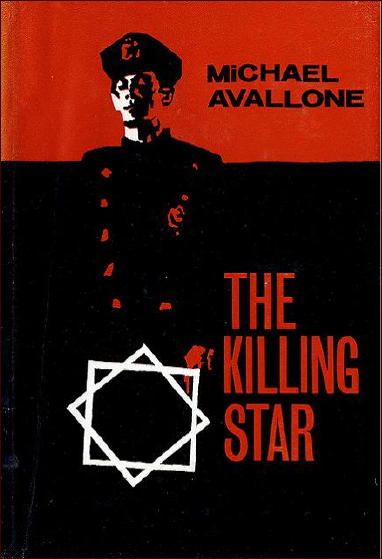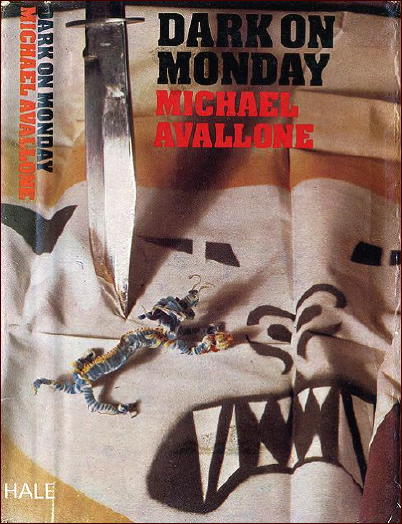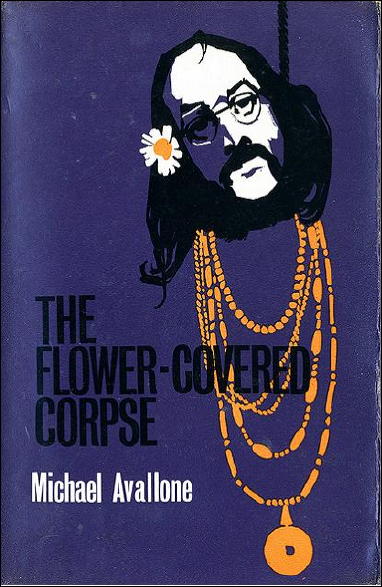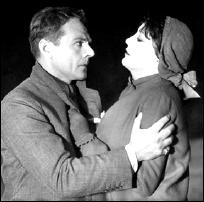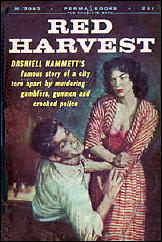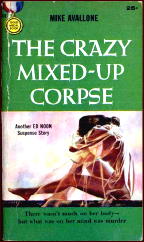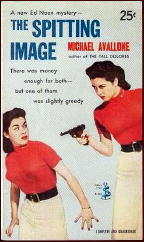COLLECTING PULPS: A MEMOIR
PART FIVE — REMEMBERING MIKE AVALLONE
by Walker Martin
While commenting on “Fifty Funny Felonies” by David Vineyard this past week, several readers started to talk about Mike Avallone. Sometimes the comments take over the original subject and go off in a different direction. I started to think about my friendship with Mike and how he was such a larger than life person. Is he really gone? Here are some of my memories.

Stephen Mertz mentions how Mike would start talking and telling jokes “full tilt,” and how his wife Fran would yell at him to shut up and listen, but Mike would carry on. There was no stopping him.
In 1995 Mike was Guest of Honor at the Pulpcon convention along with Hugh Cave. Everett Kinstler, the famous portrait painter and Shadow illustrator, also was a guest but to tell you the truth I was so busy buying and selling pulps that I don’t even remember Kinstler being there. But I sure remember Mike Avallone.
He had been a regular at previous Pulpcons, and though he couldn’t afford to buy any, he loved being around the old magazines and talking about them. I was part of a group of East Coast collectors who included Mike in their meetings and since he didn’t drive we would drive him to our homes for pulp get-togethers and conventions like Pulpcon. In fact one of our friends to this day still has “Ed Noon” as part of his email address and for many years he had stenciled on his car window, “Ed Noon Associates.”
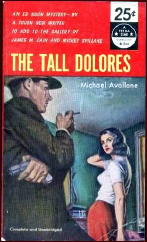
Mike was so excited and hyper at this convention that he was practically out of control. Why? Because he took being Guest of Honor seriously and was so pleased at the recognition from his friends and fellow collectors. He received a beautiful plaque showing four pulps and digests that he had appeared in with stories. Mike did actually have a few tales in the pulps before they disappeared.
The entire four day weekend, I don’t think Mike got much sleep. Every night he was up telling jokes, talking about movies and baseball, interacting with the other collectors. One of my close friends, Harry Noble who was one of the great pulp collectors, had a habit of going to bed early at 9:00 pm and getting up at 3:00 am. He got up as usual at 3:00, saw Mike and a several collectors sitting around laughing and talking, and thought we were all getting up early like him. The truth was that we had not even gone to bed yet.
Some people did not take to Mike at all. He seemed to have the ability to annoy or make some collectors angry. I was witness to this at the Bouchercon in Philadelphia in 1989. Again Mike was over the top and greeted a fellow collector’s wife and grown daughter with hugs and smiles. But they were really uptight and dignified and acted horrified at his friendly behavior. It was comical to see the collector’s embarrassment as his wife and daughter backed away from Mike with big frowns. On the other hand, my wife and daughter loved Mike and his funny compliments.
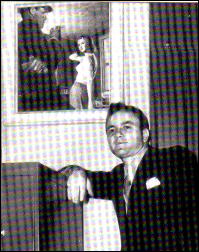
When it was time to eat dinner, we made the mistake of going into Bookbinders restaurant, which was too classy for people like us. We sat down with the help of several waiters, saw the menu and prices, and immediately realized we had blundered.
I was prepared to stay and pay the high price of the meal rather than leave, but not Mike. He stood up and led us out past the disapproving gaze of the waiters and other diners. I felt like a fool lugging my two sack of books but Mike just laughed as usual, and we ate at a nearby pub.
Many times Mike visited my house with other collectors and often stayed for dinner. He liked my wife’s Italian cooking. But he liked my pulp and paperback collection even more. I happened to have the original cover painting to the Ace novel by Mike titled The Case of the Bouncing Betty.
He loved looking at the painting and gave me a photo of the painting that he owned to The Tall Dolores, another Ed Noon novel. I tried many times to buy the painting from him and though I had the impression that he needed money, he just couldn’t sell it.
For many years Al Tonik held meetings at his house which we called Tonikcons. There were around 20 or these, most of which Mike attended. We would eat and drink, meanwhile talking books and pulps. One meeting he bought a video tape showing when he was a guest on the TV show To Tell the Truth. I believe he appeared in 1981.
When he would visit me he often headed to my paperback room which had a couple of stacks of Avallone paperbacks. The first couple times he pulled out his pen and offered to sign them all. But every time I said “no, don’t sign, they are worth more without the signature.” Many authors would have been angry at such a joke, but not Mike.
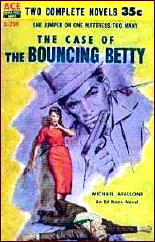
One disaster was just barely avoided the night Mike walked out of the paperback room and almost took a header down the staircase. We grabbed him in time and he joked about the headline in local papers that might have read, “Fastest Typewriter in the East Falls to Death in Pulp Collector’s House.”
He said that would be the way he would want to die if he had to go. Mike said he wrote a short story about almost falling down the stairs, but I’ve never seen it.
But the thing he liked even more than the paperbacks, was my Spider pulp collection. He said it was his favorite magazine as a boy and he loved looking at the issues. In the late nineties he sold his house in New Brunswick, NJ and he moved to the west coast.
His friends back east worried about him not having his support system of pals, and I guess we were right. He died soon after moving within a year or two in 1999. Soon after his death I sold my Spider set, and so ended a period of my life that I’ve still not come to terms with.
A Partial Bibliography. This list of titles that follows, taken from the Revised Crime Fiction IV, by Allen J. Hubin, consists only of Mike Avallone’s mystery and detective fiction published under his own name. It does not include crime fiction written under the pseudonyms Priscilla Dalton, Mark Dane, Jean-Anne de Pre, Dora Highland, Steve Michaels, Dorothea Nile, Edwina Noone & Sidney Stuart, not does it attempt to list any of his non-criminous work.
AVALLONE, MICHAEL (Angelo, Jr.) 1924-1999.
* The Tall Dolores (n.) Holt 1953 [Ed Noon]
* The Spitting Image (n.) Holt 1953 [Ed Noon]
* Dead Game (n.) Holt 1954 [Ed Noon]
* Violence in Velvet (n.) Signet 1956 [Ed Noon]
* The Case of the Bouncing Betty (n.) Ace 1957 [Ed Noon]
* The Case of the Violent Virgin (n.) Ace 1957 [Ed Noon]
* The Crazy Mixed-Up Corpse (n.) Gold Medal 1957 [Ed Noon]
* The Voodoo Murders (n.) Gold Medal 1957 [Ed Noon]
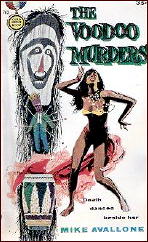
* Meanwhile Back at the Morgue (n.) Gold Medal 1960 [Ed Noon]
* The Little Black Book (n.) Midwood 1961
* The Bedroom Bolero (n.) Belmont 1963 [Ed Noon]
* Shock Corridor (n.) Belmont 1963
* Tales of the Frightened (co) Belmont 1963
* There Is Something About a Dame (n.) Belmont 1963 [Ed Noon]
* Lust Is No Lady (n.) Belmont 1964 [Ed Noon]
* Run, Spy, Run [with Valerie Moolman** ] (n.) Award 1964 [Nick Carter]
* The China Doll [with Valerie Moolman** ] (n.) Award 1964 [Nick Carter]
* Saigon [with Valerie Moolman] (n.) Award 1964 [Nick Carter]
* The Man from U.N.C.L.E. (The Thousand Coffins Affair) (n.) Ace 1965 [Napoleon Solo]
* The Birds of a Feather Affair (n.) Signet 1966 [April Dancer; Girl from U.N.C.L.E.]
* The Blazing Affair (n.) Signet 1966 [April Dancer; Girl from U.N.C.L.E.]
* Kaleidoscope (n.) Popular Library 1966
* Madame X (n.) Popular Library 1966
* The February Doll Murders (n.) Signet 1967 [Ed Noon]
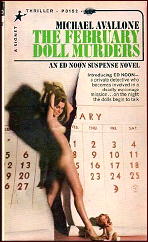
* The Felony Squad (n.) Popular Library 1967
* The Man from AVON (n.) Avon 1967
* Assassins Don’t Die in Bed (n.) Signet 1968 [Ed Noon]
* The Coffin Things (n.) Lancer 1968
* Hawaii Five-O (n.) Signet 1968
* The Incident (n.) Popular Library 1968
* Mannix (n.) Popular Library 1968
* The Doomsday Bag (n.) Signet 1969 [Ed Noon]
* The Killing Star (n.) Hale 1969
* Missing! (n.) Signet 1969
* Terror in the Sun (n.) Signet 1969 [Hawaii Five-O]
* A Bullet for Pretty Boy (n.) Curtis 1970
* One More Time (n.) Popular Library 1970
* The Partridge Family #2: The Haunted Hall. Curtis 1970
* Death Dives Deep (n.) Signet 1971 [Ed Noon]
* The Fat Death (n.) Curtis 1971 [Ed Noon]
* Little Miss Murder (n.) Signet 1971 [Ed Noon]
* The Flower-Covered Corpse (n.) Curtis 1972 [Ed Noon]
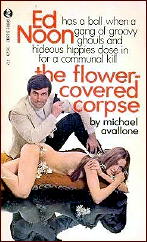
* The Girl in the Cockpit (n.) Curtis 1972 [Ed Noon]
* The Horrible Man (n.) Curtis 1972 [Ed Noon]
* The Living Bomb (n.) Curtis 1972 [Ed Noon]
* London, Bloody London (n.) Curtis 1972 [Ed Noon]
* Shoot It Again, Sam (n.) Curtis 1972 [Ed Noon]
* The Alarming Clock (n.) Curtis 1973 [Ed Noon]
* The Hot Body (n.) Curtis 1973 [Ed Noon]
* Kill Her — You’ll Like It! (n.) Curtis 1973 [Ed Noon]
* Killer on the Keys (n.) Curtis 1973 [Ed Noon]
* The X-Rated Corpse (n.) Curtis 1973 [Ed Noon]
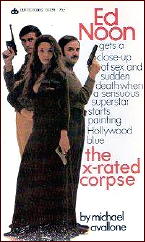
* Fallen Angel (n.) Warner 1974 [Satan Sleuth: Philip St. George]
* The Werewolf Walks Tonight (n.) Warner 1974 [Satan Sleuth: Philip St. George]
* Devil, Devil (n.) Warner 1975 [Satan Sleuth: Philip St. George]
* The Big Stiffs (n.) Hale 1977 [Ed Noon]
* -Carquake (n.) Star 1977
* CB Logbook of the White Knight (co) Scholastic 1977
* Dark on Monday (n.) Hale 1978 [Ed Noon]
* 5 Minute Mysteries (co) Scholastic 1978 [Ed Noon]
* Charlie Chan and the Curse of the Dragon Queen (n.) Pinnacle 1981
* High Noon at Midnight (n.) PaperJacks 1988 [Ed Noon]
* Open Season on Cops, and The Arabella Nude (co) Gryphon Books 1992 [Ed Noon]
* Mitzi (n.) Gryphon Books 1997
Previously on Mystery*File: Part Four — Collecting Detective Story Magazine.
Coming next: Part Six — Collecting the other Popular Publications pulps.
Editorial Comments: Thanks to Scott Hartshorn for providing the two photos you see above. The first was taken outside Nick Certo’s house, circa 1992. The black and white photo, taken in the early 50s, is that of Mike standing beside the cover painting for The Tall Dolores. The cover itself you can see in color just above the photo and to the left.
Note that Mike can be seen in the cover of The X-Rated Corpse. He’s the fellow on the right. Coming tomorrow: Bill Pronzini’s 1001 Midnights review of The Case of the Violent Virgin.

